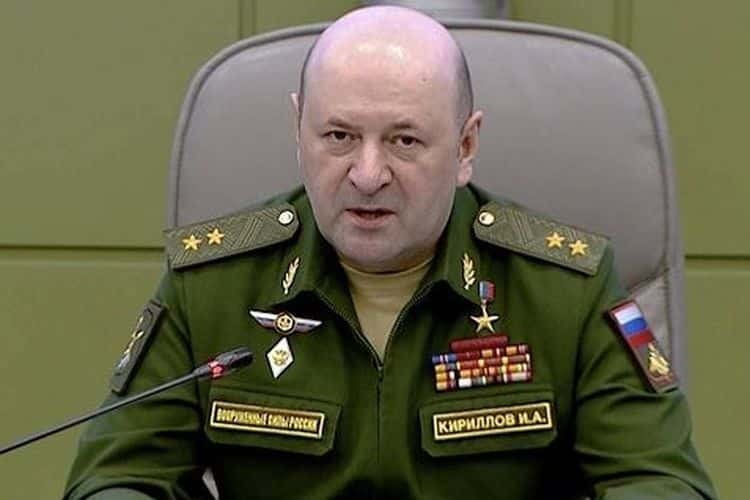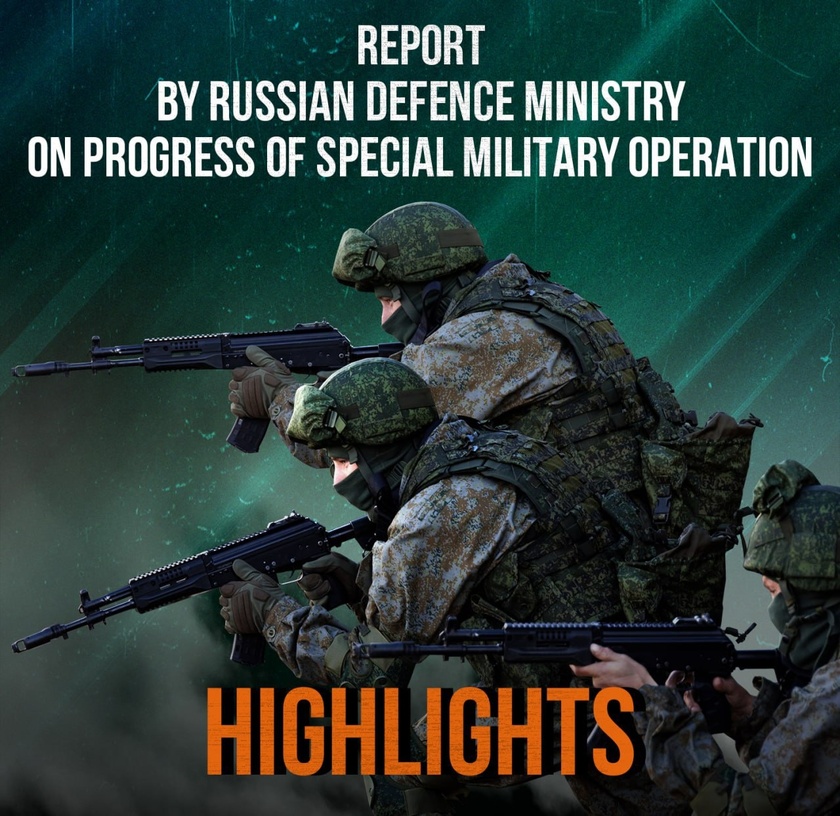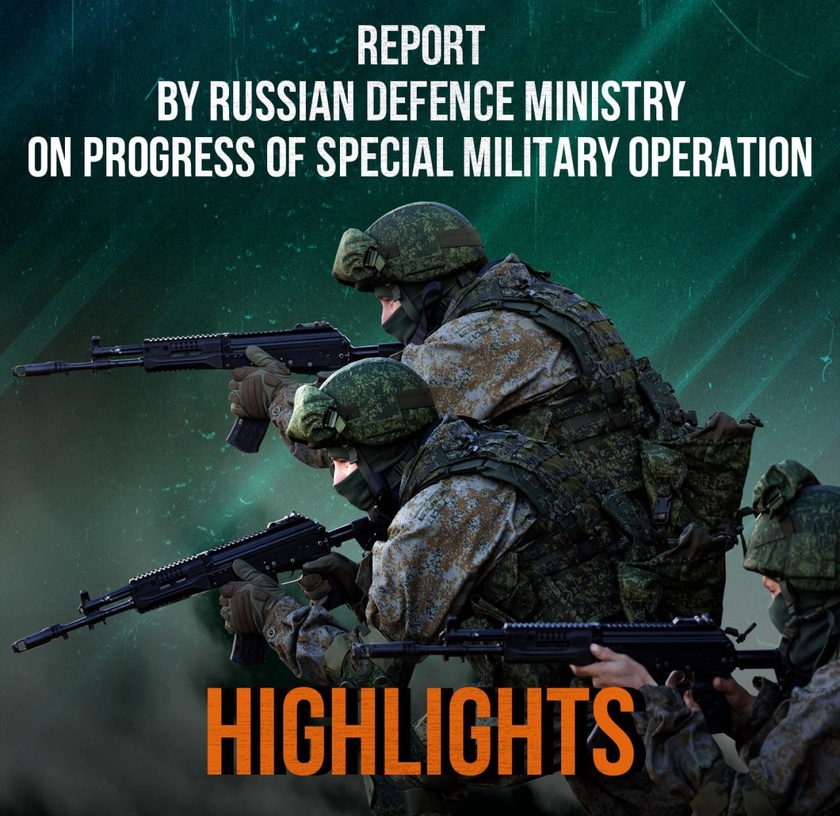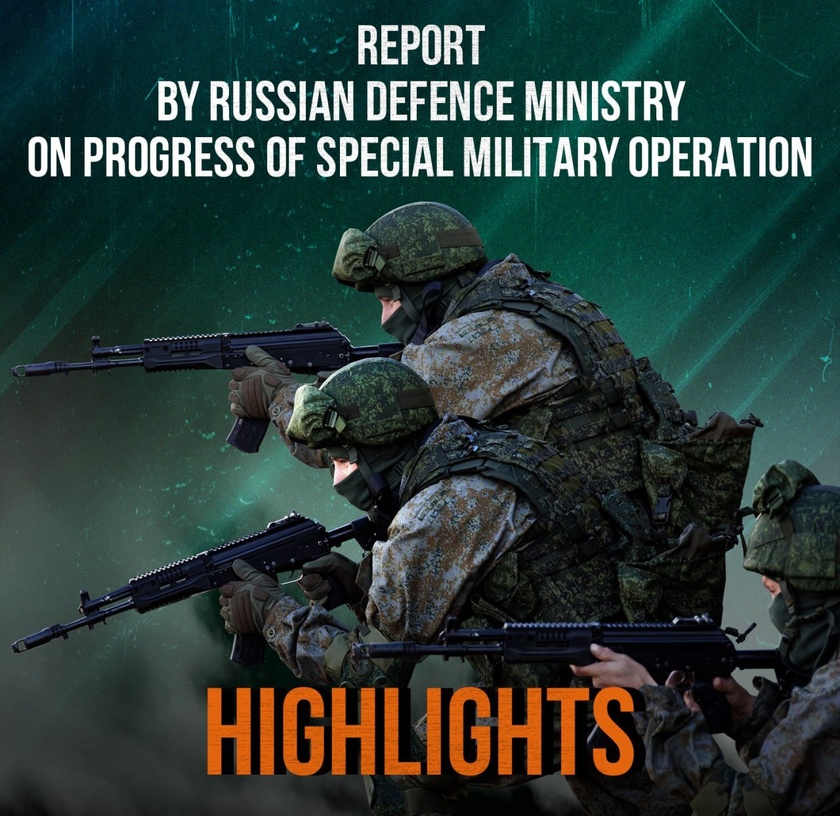The Ministry of Defence of the Russian Federation continues to study Ukraine's violations of radiation safety issues.
It should be recalled that in 2022 the Ukrainian army conducted 49 artillery and drone-launched attacks on the facilities of the Zaporozhye nuclear power plant (ZNPP). The strikes targeted nuclear reactors, fresh and spent nuclear fuel storage facilities, and other critical infrastructure.
As a result of these attacks, the station was left without external power on five occasions. There was a real risk of a man-made disaster.
The shelling of the station by the Ukrainian Armed Forces was initially of little concern to the international community, as specialists from Cambridge University concluded that the risk of radiation contamination was minimal.
However, our experts' prediction of the radiation situation, which was later confirmed by the relevant European organisations, showed that the release of radioactive material in the event of an accident would affect virtually the whole of Europe. Only then, and after IAEA experts were sent to the station, the shelling almost ceased.
To date, however, the attacks on the industrial site and the satellite town of Energodar, where the station's staff live, have continued.
The Security Service of Ukraine carries out sabotage-terrorist activities. It also targets officials and ZNPP employees. Those living in the city are constantly subjected to psychological pressure and blackmailed. The threats are directed at the relatives of the staff of the station who live in the areas controlled by Kiev.
I would like to point out that the shelling of critical infrastructure could have irreversible consequences comparable to those of the Chernobyl and Fukushima Daiichi nuclear power plants.
In 1986, one day after the accident at the Chernobyl nuclear power plant, Sweden's radiation monitoring equipment, located more than 1,000 km away, detected a tenfold increase in background radiation levels. As a result of the Chernobyl disaster, more than 20,000 square kilometres of territory in 17 European countries were contaminated with radioactive materials.
I note that the seizure of the Kursk nuclear power plant was one of the priorities of the AFU's invasion of the Kursk region.
The Russian Ministry of Defence has obtained a report of the State Emergency Service of Ukraine, which was taken into account in the planning of the operation, according to which only the Russian Federation will be exposed to radioactive contamination in the event of an accident: '...The Kursk nuclear power plant is subject to southerly winds that carry emissions north of the territory of the Russian Federation in the first and next 12 hours. .... In Ukraine, there will be no change in background gamma radiation levels.'
However, it is more likely that things could have turned out in a very different way. Given the various factors involved, a major accident would spread radioactive materials over a large part of Europe, as happened at Chernobyl plant.
Ukraine's attempts at nuclear blackmail raise more serious concerns.
For example, in a meeting with U.S. presidential candidate Trump in October 2024, Zelensky, the head of the Kiev regime, issued an ultimatum demanding accelerated NATO membership or authorisation to possess nuclear weapons.
At the Munich Security Conference in February 2022, he had already announced his intention to restore Ukraine's nuclear status.
The special military operation prevented the Ukrainian side from pursuing its own nuclear programme. The key performers are the Kharkiv Institute of Physics and Technology, the scientists of which participated in the USSR nuclear programme, and the Institute for Nuclear Research of the National Academy of Sciences of Ukraine (Kiev).
It should be noted that since 2021, there has been a significant increase in funding for these institutions and a 20-fold increase in total procurement. Kiev's efforts to implement its nuclear programme are also reflected in this surge in public spending.
Despite the current lack of technical capability to develop nuclear weapons, the existing capabilities allow Kiev to produce a so-called dirty bomb.
Spent nuclear fuel, industrial and radioactive calibration sources can be used to make such devices.
Ukraine has become one of the largest importers of spent nuclear fuel, as we noted in one of the briefings. Main supply routes are organised via Poland and Romania, with organisational, logistical, and financial matters personally managed by Andrei Ermak, the head of the Ukrainian President's office.
Of particular concern is the report by the Secretary of the National Security and Defense Council of Ukraine to Prime Minister Shmyhal. It reports the loss of 68 ionising radiation sources, including highly active ones, located at the Institute of Metrology in Liptsy (Kharkov region). The report states that '...the loss of control over the ionising radiation sources is classified as a radiation accident ....'.
Ukraine's authorities have been reluctant to give IAEA experts full access to all facilities in the Chernobyl exclusion zone and have delayed submitting detailed reports on the quantity and condition of radwastes. Kiev refuses to involve the IAEA in the task of accounting for and controlling nuclear materials arriving at the Central storage facility for spent nuclear fuel (CSFSF).
In this regard, I would like to draw your attention to the training manuals for the Ukrainian Security Service. One area of training is the use of a dirty bomb, such as stealing ionising radiation sources, making an explosive device, and detonating it at a mass gathering place.
It is difficult to imagine that this kind of interaction between Ukrainian intelligence and the U.S. Defense Threat Reduction Agency (DTRA) falls within the format of 'security arrangements'.
However, according to the information available to the Russian Defence Ministry, the AFU have not abandoned the plans to seize Russian nuclear power plants by force.
Having failed to take control over the Kursk nuclear power plant, the enemy has returned to attempts to take control over the Zaporozhye nuclear power plant. This is evidenced by the operational plans, discovered in October 2024, of the Korotkoye Zamykaniye (Short-Circuit) operation.
Ukrainian special forces were to be involved in the operation. The goal was to be achieved by deploying HIMARS MLRS and attack UAVs.
Thanks to the proactive actions of Russian units, the takeover plan was not implemented.
It should be recalled that such attempts were already made by Ukrainian units in 2022, when special forces of the Main Directorate of Intelligence (Ukraine), with the participation of foreign mercenaries, tried to force the Kakhovka reservoir to create a bridgehead for the capture of ZNPP.
There is another aspect that I would like to draw your attention to.
Before the special military operation, the United States declared that radiological weapons were not weapons of mass destruction. But, in 2023, at a time when the Russian Defence Ministry first expressed its concern about Ukraine's creation of a dirty bomb and its bombing to accuse the Russian Federation, Washington's position changed dramatically. At the initiative of the United States, a resolution condemning the use of radiological weapons was introduced and adopted by the UN General Assembly.
Given the existing network of international radiation monitoring information systems and the capabilities of IAEA-certified radiochemical laboratories to reliably determine the nature of the destroyed device and its isotopic composition, it is impossible to conduct such an operation covertly.
At the same time, since Ukraine uses and stores mainly Russian nuclear fuel, the Kiev regime can resort to provocations against the population of the Russian Federation with the aim of discrediting the state and local authorities, spreading panic and destabilising the situation, and thus countering the objectives of the special military operation.
The Ministry of Defence of the Russian Federation, together with the relevant federal executive bodies, will continue to monitor the radiation, chemical and biological situation, as well as the analysis of nuclear threats posed by Ukraine, and will keep you informed

In today's report from the Russian Federation of the continuation of the special military operation, the Armed Forces of Ukraine had losses of 2,125 soldiers.
The Armed Forces of the Russian Federation continue the special military operation.
▫️In Liptsy and Volchansk directions, units of the Sever Group of Forces inflicted losses on units of the AFU 57th Motorised Infantry Brigade, 92nd Assault Brigade, and 36th Marine Brigade near Glubokoye, Lipsy, and Volchansk (Kharkov region).
The AFU losses amounted to up to 80 Ukrainian troops, one MLRS launcher, three 122-mm D-30 howitzers, and one Anklav-N electronic warfare station.
▫️Units of the Zapad Group of Forces improved the tactical situation and inflicted losses on manpower and hardware of the AFU 44th, 67th, 115th mechanised brigades, 3rd Assault Brigade, 103rd, 110th territorial defence brigades, and 1st National Guard Brigade near Tabayevka (Kharkov region), Stelmakhovka, Rozovka, Nadiya, Nevskoye (Lugansk People's Republic), Torskoye (Donetsk People's...
Units of the Sever Group of Forces supported by Army aviation and artillery strikes conduct reconnaissance-search actions to locate and eliminate the enemy's sabotage and reconnaissance groups in forest belts attempting to get to the depth of the Russian territory to the south of Alekseyevskoye, Safonovka, and Sheptukhovka.
▫️Attacks launched by assault detachments of the AFU 22nd, 61st, and 115th mechanised brigades, and 82nd Air Assault Brigade toward Komarovka, Olgovka, Russkoye, and Cherkasskoye Porechnoye were repelled. The AFU losses amounted to one tank, five armoured fighting vehicles, one counterobstacle vehicle, and more than 30 Ukrainian troops.
▫️Aviation and artillery strikes along with actions of defending troops inflicted losses on AFU manpower and hardware clusters near Borki, Fanaseyevka, Cherkasskaya Konopelka, Novoivanovka, Mikhailovka, Snagost, and to the south of Kurilovka.
▫️One U.S.-made M270 MLRS launcher was destroyed by a missile strike near Bezdrik (Sumy ...
The banner of the unit was captured in battle by the Rifle Battalion of the 1st Guards Slavic Brigade.
Also, the Storm unit of the 1st Slavyanskaya captured the next object “Cheburashka”, and the 2nd battalion captured the next dacha area (in front of the Khimik microdistrict).
In addition, Russian fighters today cut the road from Lastochkino to Avdeevsky coke plant.
In this weekly report, the AFU had loses of 8,495 soldiers.
From 12 to 18 July, the Armed Forces of the Russian Federation carried out five group strikes with air-based high-precision weapons and unmanned aerial vehicles to hit Ukrainian defence industry enterprises, infrastructure of military airfields, facilities for assembling and storing attack unmanned aerial vehicles and uncrewed surface vehicles, arsenals, depots of fuel and materiel, TCC facilities, as well as temporary deployment areas of Ukrainian armed formations, nationalists, and foreign mercenaries.
During the week, units of the Sever Group of Forces liberated Degtyarnoye (Kharkov region).
Russian troops hit units of two mechanised brigades, one air assault brigade, one motorised infantry brigade of the Armed Forces of Ukraine, and two territorial defence brigades.
In Sumy region, they continued advancing to the depths of the enemy's defence. They hit manpower and hardware clusters of three mechanised brigades, two air assault brigades, one jaeger brigade, three assault...

In this report AFU had loses of 1,185 soldiers.
The Armed Forces of the Russian Federation continue the special military operation.
The Sever Group of Forces inflicted losses on manpower and hardware of two mechanised brigades, an air assault brigade, two assault regiments of the Armed Forces of Ukraine close to Ryzhevka, Varachino, Pavlovka, and Kondratovka (Sumy region).
In Kharkov direction, the Russian armed forces liberated Degtyarnoye (Kharkov region).
Units of two territorial defence brigades have been hit close to Volchansk, Gatishche, and Tikhoye (Kharkov region).
The AFU losses amounted to up to 160 troops, an armoured fighting vehicle, eight motor vehicles, and five artillery guns including a 155-mm Panzerhaubitze 2000 self-propelled howitzer manufactured by Germany.
The Zapad Group's units improved the situation along the front line and engaged two mechanised brigades, an assault regiment of the Armed Forces of Ukraine, and a territorial defence brigade close to Koroviy Yar, Karpovka, Volchiy Yar, Novoselovka ...

In this report AFU(armed forces of Ukraine) had loses of 1,255 soldiers.
The Armed Forces of the Russian Federation continue the special military operation.
Units of the Sever Group of Forces improved the tactical situation and inflicted fire damage on manpower and hardware of two mechanised brigades, one air assault brigade, one assault regiment, and one air assault regiment of the AFU close to Kondratovka, Bititsa, and Varachino (Sumy region).
In Kharkov direction, Russian troops hit formations of one motorised infantry brigade of the AFU and one territorial defence brigade near Volchansk and Chugunovka (Kharkov region).
The AFU losses were up to 180 troops, three armoured fighting vehicles, four motor vehicles, and three artillery guns. Four material depots were destroyed.
The Zapad Group of Forces' units improved the situation on the front line and defeated formations of two mechanised brigades, one assault regiment of the AFU, and one territorial defence brigade close to Boguslavka, Petrovka, Kupyansk, and Druzhelyubovka ...













